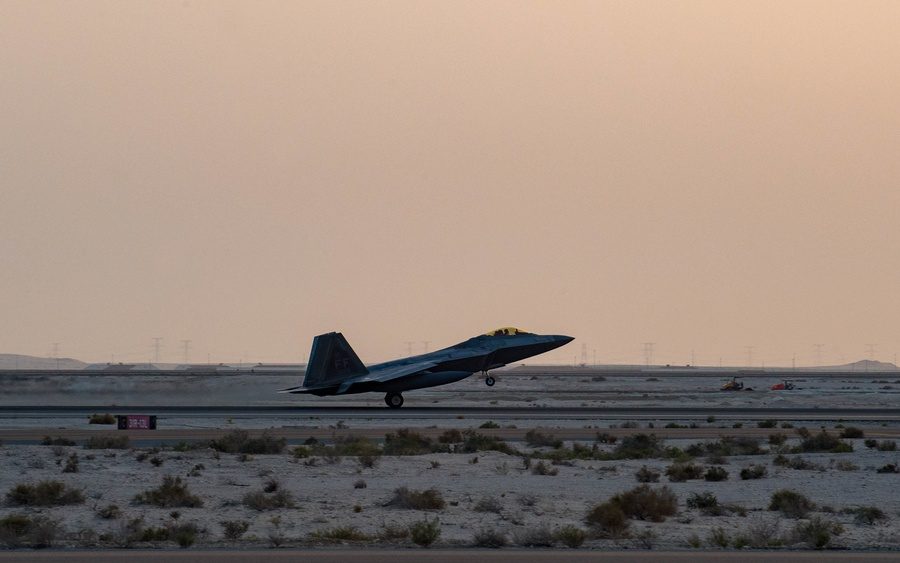F-22s from the 1st Fighter Wing landed at Al Dhafra Air Base, United Arab Emirates, on Feb. 12, fulfilling a pledge by Defense Secretary Lloyd J. Austin III to deploy fifth-generation aircraft to the Gulf nation.
The fighters are from the 27th Fighter Squadron based out of Joint Base Langley-Eustis, Va., the Air Force announced in a release.
“Through the vital support of the 192nd Wing and the 633rd Air Base Wing, we were able to get the 27th Fighter Squadron out the door on short-notice,” Col. William Creeden, 1st Fighter Wing commander, said in a statement. “Our Raptors are modernized, highly capable fighters, operated by the finest Airmen, and they bring decisive airpower wherever they go.”
The decision to deploy fifth-generation fighters, instead of F-15s or F-16s, presents several advantages for the U.S. and UAE in their efforts to combat the recent airstrikes, retired Lt. Gen. David A. Deptula, dean of the Air Force Association’s Mitchell Institute for Aerospace Studies, told Air Force Magazine.
“The fact of the matter is, either the F-35 or the F-22 has a series of sensors that can provide an integration of sensing modalities and capabilities that no other combat aircraft has,” Deptula said. “And so they can then take that information and turn it into an actionable decision, again, in a fashion that no other combat aircraft can, and use that synthesized information to effectively counter whatever threat happens to be posed.”
Austin made the commitment in the wake of escalating drone and missile strikes against the UAE launched by Iranian-backed Houthi rebels from Yemen. Several of the Houthi missile attacks specifically targeted Al Dhafra, killing several people and forcing American troops to shelter in bunkers. Americans launched Patriot missiles in return. But with F-22s, commanders in the region will have greater situational awareness, Deptula said.
“Remember that after the Russians moved S-400s into Syria, there were no aircraft that flew inside of Syria without F-22s being airborne—not because they needed to be there to shoot down other airplanes, but because of the ability to gain and maintain situational awareness and to provide it to the other aircraft that were operating in the area,” Deptula said.
In a Feb. 1 phone call with Crown Prince Mohammed Bin Zayed Al Nahyan, deputy supreme commander of the UAE Armed Forces, Austin said he would send fifth-generation fighters, as well as the USS Cole, to the UAE to bolster its defenses. Commander of U.S. Central Command Gen. Kenneth F. McKenzie Jr. later specified in an interview with a state news agency that the aircraft would be F-22s.
The F-22’s stealth capabilities could also prove useful. McKenzie said in his interview, “We would like to work against drones what we call ‘Left of Launch,’ [which means] before they can be launched.”
“Fifth-gen aircraft have a degree of sensor integration and capabilities that no other combat aircraft have,” Deptula said. “At the same time, they have the ability to operate in contested airspace without being observed, which provides and yields great advantages if you’re going to employ weapons with respect to a particular situation,” he continued. “So it helps achieve the objective and advantage of surprise, and the sensor integration provides a degree of situational awareness that no other combat aircraft can provide.”


